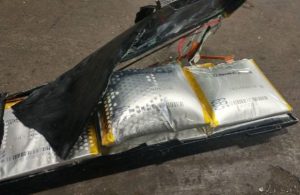Damaged, Defective and Recalled Batteries

Do you have a battery or cellphone that is swollen, corroded, leaking or showing burn marks? Or has been recalled by the manufacturer?
These situations are becoming more common as consumer devices rely on smaller but more powerful batteries. And damaged lithium metal or lithium ion batteries are specially regulated by U.S. DOT.
ALL damaged, defective or recalled (DDR) lithium ion (rechargeable) and lithium metal (primary/non-rechargeable) batteries require special handling. If a DDR lithium-based battery is shipped without proper protection, they are more likely to cause safety incidents, such as sparks that can turn into a fire at collection sites or at shipping facilities.
Under our program guidelines, these batteries cannot be placed in a regular Call2Recycle box. The U.S. DOT also requires special handling and packaging process for DDR lithium-based batteries.
Call2Recycle offers a recycling service that meets the U.S. DOT packaging, handling and transportation requirements under a special permit granted by the federal government. The service provides the appropriate solution based on the battery type and applicable shipping requirements. We also provide services for defective and recalled batteries when, for example, a manufacturer or the Consumer Product Safety Commission have identified a performance or safety issue and the battery needs to be safely transported.
If you think you have a DDR battery, visit the store to purchase a DDR container or for more information on Call2Recycle’s DDR services, please contact our Customer Success Team.